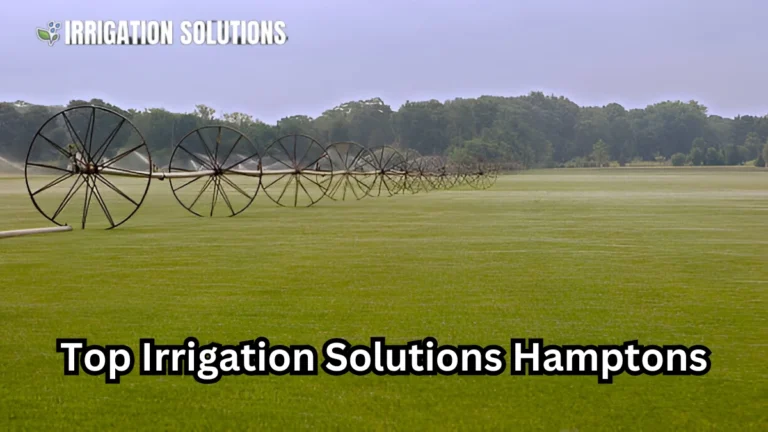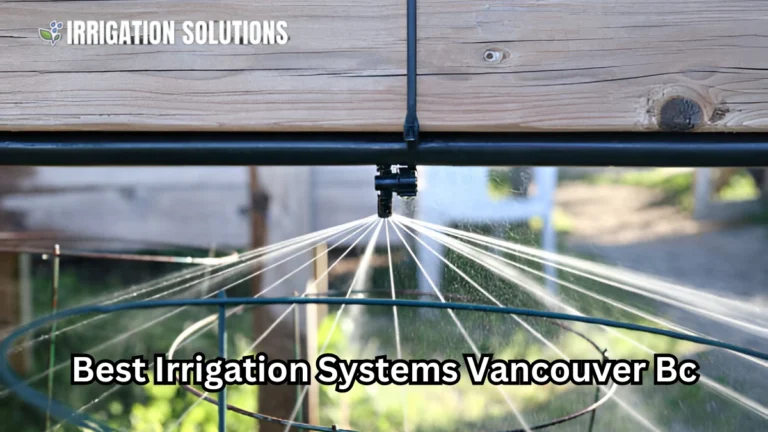Best Irrigation Solutions Michigan

Michigan, with its diverse agricultural landscape and fluctuating climate, presents unique challenges and opportunities for effective irrigation. From small scale gardens to expansive farms, having an efficient irrigation system is essential to ensure sustainable water use, optimize crop yields, and support the state’s agricultural economy. In this guide, we’ll dive deep into the best irrigation solutions for Michigan, explore their benefits, and provide actionable tips for implementing these systems effectively.
Why Irrigation Matters in Michigan
Michigan boasts over 10 million acres of farmland, contributing significantly to the state’s economy. However, the state’s variable rainfall patterns and sandy soils in certain regions make water management crucial.
Challenges of Water Management in Michigan
- Inconsistent Rainfall: Summers can bring unpredictable dry spells.
- Soil Diversity: From sandy soils in the western regions to clay heavy soils in the southeast, water retention varies widely.
- Crop Needs: Michigan grows a variety of crops like corn, soybeans, fruits, and vegetables, each with specific water requirements.
Benefits of a Good Irrigation System
- Ensures optimal crop hydration during dry periods.
- Conserves water by reducing waste.
- Enhances soil health and prevents erosion.
- Boosts crop quality and yield.
Types of Irrigation Solutions for Michigan
Choosing the right irrigation method is vital. Here’s a breakdown of common systems suited to Michigan’s agricultural and residential needs:
Drip Irrigation
How it Works:
Drip irrigation delivers water directly to the root zone through a network of tubes and emitters, minimizing evaporation and runoff.
Advantages:
- Saves up to 50% more water compared to traditional methods.
- Ideal for fruit orchards, vineyards, and vegetable crops prevalent in Michigan.
- Reduces weed growth by targeting water application.
Best Use Cases:
- Small gardens and orchards.
- Row crops like tomatoes and peppers.
Sprinkler Systems
How it Works:
Sprinkler systems mimic natural rainfall by dispersing water through spray heads or rotors.
Advantages:
- Uniform coverage, making it suitable for larger fields.
- Versatile for a variety of crops, including corn and soybeans.
Drawbacks:
- High evaporation rates during windy or hot conditions.
Center Pivot Irrigation
How it Works:
A rotating system irrigates crops in a circular pattern, covering large fields efficiently.
Advantages:
- Covers up to 100 acres or more per system.
- Reduces labor costs with automation.
Considerations:
- Initial setup costs can be high.
- Best suited for flat, expansive areas like Michigan’s Thumb region.
Surface Irrigation
How it Works:
Water flows over the soil surface to hydrate crops.
Advantages:
- Cost effective for farms with natural water sources.
- No need for advanced equipment.
Challenges:
- Requires precise land leveling for even distribution.
Key Factors When Choosing an Irrigation System
Here are some considerations to keep in mind:
| Factor | Importance | Example for Michigan Crops |
| Soil Type | Sandy soils require frequent watering; clay holds moisture longer. | Fruit crops in sandy soils benefit from drip systems. |
| Crop Type | Different crops have varied water needs. | Corn requires more water than root vegetables. |
| Water Availability | Availability of groundwater or surface water sources. | Farms near Lake Michigan may use surface irrigation. |
| Budget | Initial setup and maintenance costs. | Small farms may prefer sprinkler or drip systems. |
Advanced Irrigation Technologies
Innovations in irrigation are helping Michigan farmers stay ahead of the curve.
Smart Irrigation Controllers
These systems use weather data and soil sensors to adjust watering schedules automatically, saving water and reducing costs.
Example: A smart system can delay watering during a rainstorm, preventing over irrigation.
Subsurface Drip Irrigation (SDI)
This advanced method places drip lines below the soil surface, directly hydrating the roots while minimizing evaporation.
Benefits:
- Ideal for Michigan’s sandy soils.
- Reduces weed growth significantly.
Remote Monitoring Systems
Using IoT devices, farmers can monitor irrigation systems remotely, ensuring efficiency and reducing downtime.
Case Study: Drip Irrigation in Michigan Apple Orchards
Background:
An apple orchard in west Michigan faced challenges with water conservation during dry spells.
Solution:
The farmer implemented a drip irrigation system with soil moisture sensors.
Results:
- Reduced water usage by 40%.
- Increased apple yield by 20% due to consistent watering.
- Enhanced soil health and minimized nutrient runoff.
Quote from the Farmer:
“Drip irrigation has been a game changer. It’s efficient and sustainable, and my apples have never been better.”
Water Conservation Tips for Michigan Farmers
To make the most of your irrigation system, follow these water saving tips:
- Schedule Wisely: Water early in the morning or late in the evening to reduce evaporation.
- Inspect Systems Regularly: Fix leaks promptly to avoid wastage.
- Utilize Rainwater Harvesting: Collect and store rainwater for irrigation use.
- Mulching: Apply mulch around plants to retain soil moisture.
Cost Comparison of Irrigation Systems
| Irrigation Method | Average Cost (Per Acre) | Maintenance Requirements | Best For |
| Drip Irrigation | $500-$1,200 | Regular cleaning of emitters. | High value crops like fruits. |
| Sprinkler Systems | $300-$700 | Check spray heads regularly. | Lawns, gardens, row crops. |
| Center Pivot Irrigation | $2,000-$4,000 | Routine inspections of pivots. | Large farms. |
| Surface Irrigation | $100-$300 | Minimal upkeep needed. | Flood tolerant crops. |
Final Thoughts
Implementing effective irrigation solutions in Michigan is about balancing cost, efficiency, and sustainability. By choosing the right system for your needs, you can ensure optimal crop growth, conserve water, and support Michigan’s agricultural legacy.
Whether you’re a small scale gardener or a large scale farmer, investing in modern irrigation technologies like drip systems and smart controllers can yield significant long term benefits. So, take the first step today and revolutionize your irrigation practices for a more productive tomorrow.






